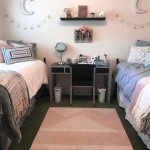The Person Who Decorates Homes: A Look at Interior Decorators and Designers
The individual who decorates homes, often referred to as an interior decorator or interior designer, plays a crucial role in transforming living spaces into functional and aesthetically pleasing environments. While the terms are often used interchangeably, distinctions exist between the scope of work and required qualifications for each profession.
Interior decoration primarily focuses on the aesthetics of a space. Decorators work with existing structures and furnishings, enhancing the visual appeal through the selection and placement of decorative elements such as paint colors, fabrics, furniture, artwork, and accessories. They typically do not engage in structural modifications or require formal training or licensing, though many complete certificate programs or associate degrees to gain expertise in design principles, color theory, and material selection.
Interior design, on the other hand, encompasses a broader scope, involving both the aesthetic and functional aspects of a space. Interior designers plan and manage projects, often overseeing renovations and structural changes in addition to selecting finishes and furnishings. They consider factors such as space planning, traffic flow, building codes, accessibility, and sustainability. Most jurisdictions require interior designers to hold a bachelor's degree in interior design or a related field, and many obtain professional certifications such as NCIDQ (National Council for Interior Design Qualification) to demonstrate competency and adherence to industry standards.
The process undertaken by both decorators and designers typically begins with a consultation with the client to understand their needs, preferences, and budget. This involves discussions about the desired style, functionality, and overall vision for the space. Designers, particularly, may conduct a thorough site analysis, measuring the space and assessing its existing features. They may also research and source materials, fixtures, and furnishings that align with the project's aesthetic and budgetary requirements.
Following the initial consultation, a proposal is presented outlining the scope of work, estimated costs, and a timeline for completion. This document serves as a roadmap for the project and ensures that both the client and the decorator/designer are aligned on the project's parameters. For larger projects overseen by designers, this proposal may include detailed drawings, renderings, and specifications for construction and installation.
The implementation phase involves the execution of the design plan. Decorators focus on the arrangement of furniture, the selection and installation of window treatments, the placement of accessories, and the overall styling of the space. Designers manage all aspects of the project, including coordinating with contractors, overseeing construction, and ensuring that the project adheres to the approved plans and specifications. They also handle the ordering and installation of fixtures, furnishings, and other design elements.
Throughout the process, communication is paramount. Both decorators and designers maintain regular contact with their clients, providing updates on progress, addressing any concerns, and ensuring that the project remains aligned with the client's vision. Regular site visits allow for ongoing assessment and adjustments as needed.
Choosing between an interior decorator and an interior designer depends on the specific needs of the project. For projects involving primarily cosmetic changes and styling, an interior decorator may be the appropriate choice. However, for projects entailing structural modifications, complex space planning, or extensive renovations, an interior designer's expertise is essential.
The skills required for successful interior decoration and design are diverse. Both professions require creativity, an understanding of design principles, strong communication skills, and project management capabilities. Designers, additionally, require technical knowledge of building codes, construction methods, and CAD (Computer-Aided Design) software. A keen eye for detail, problem-solving abilities, and the ability to visualize spaces are essential for both roles.
The field of interior decoration and design is constantly evolving, influenced by trends in fashion, technology, and sustainability. Professionals in this field must stay abreast of current trends and innovations to provide clients with the most up-to-date and relevant design solutions. Continuing education, industry publications, and attendance at trade shows are essential for maintaining professional competency.
Ultimately, the person who decorates homes plays a vital role in shaping the environments where people live, work, and relax. Whether it's a decorator enhancing the aesthetics of a living room or a designer overseeing a complete home renovation, their expertise transforms spaces into functional, beautiful, and personalized environments that reflect the client's unique style and needs.
Finding the right professional requires careful consideration of the project's scope and the individual's qualifications and experience. Researching portfolios, checking client testimonials, and verifying credentials are essential steps in selecting the right person for the job.

Household Finishing Touches To Bring Your Home The Next Level

Decorating Your First Home Together On A Budget Central Bank
Professional Decorator Charges Up To 25 000 Per House

Seven Cost Efficient Ways To Give A Premium Look Your Home Maa2mom

5 Genius Diy Home Decor S You Need To Try Asap Major League Mommy

7 In 10 British People Are Unhappy With Their Homes Size Decor Or Location Daily Mail

The Spirit Of Decorating Icon Sister Parish Lives On Architectural Digest

Design Consultant Interior Space Planning Frontgate

What Is Slow Decorating How It Can Transform Your Home

Three Types Of Decorators Which One Are You School Decorating
Related Posts







